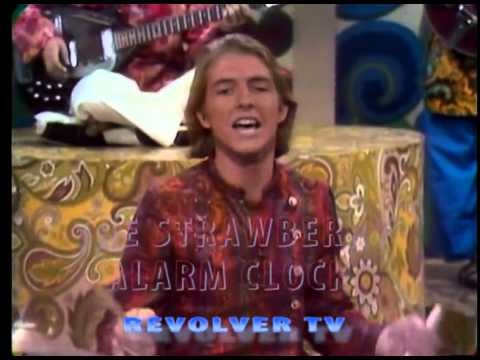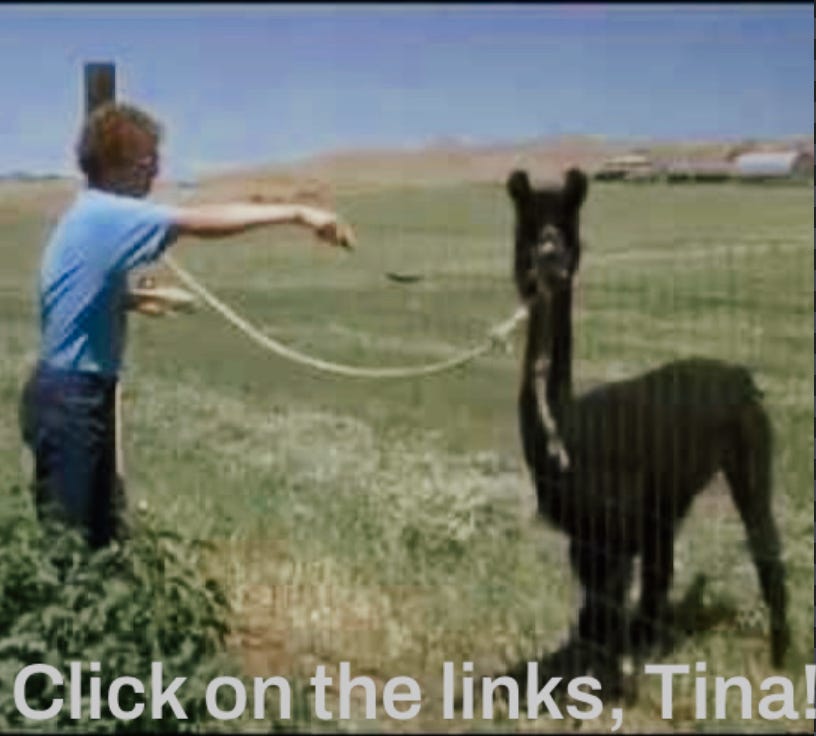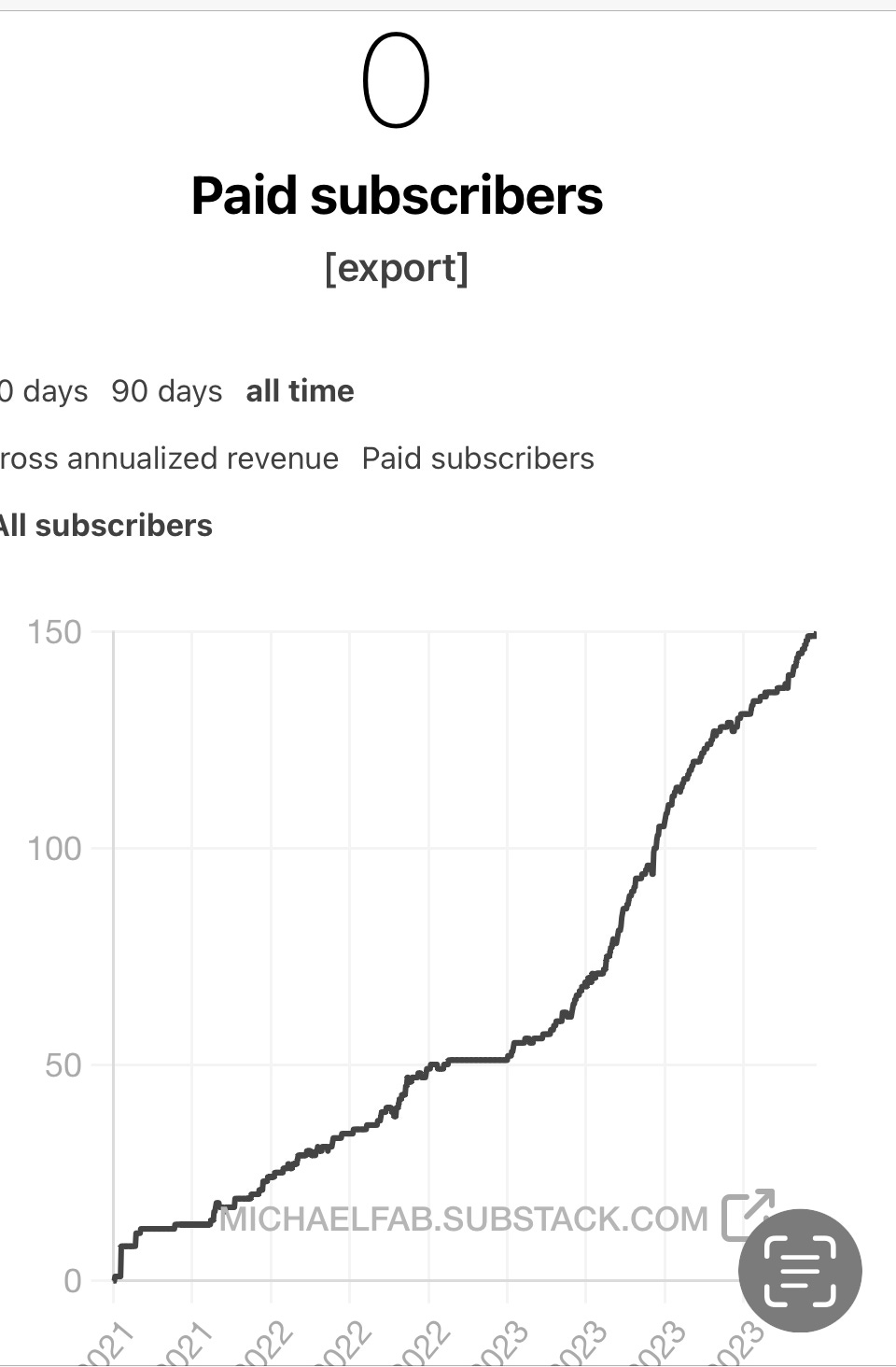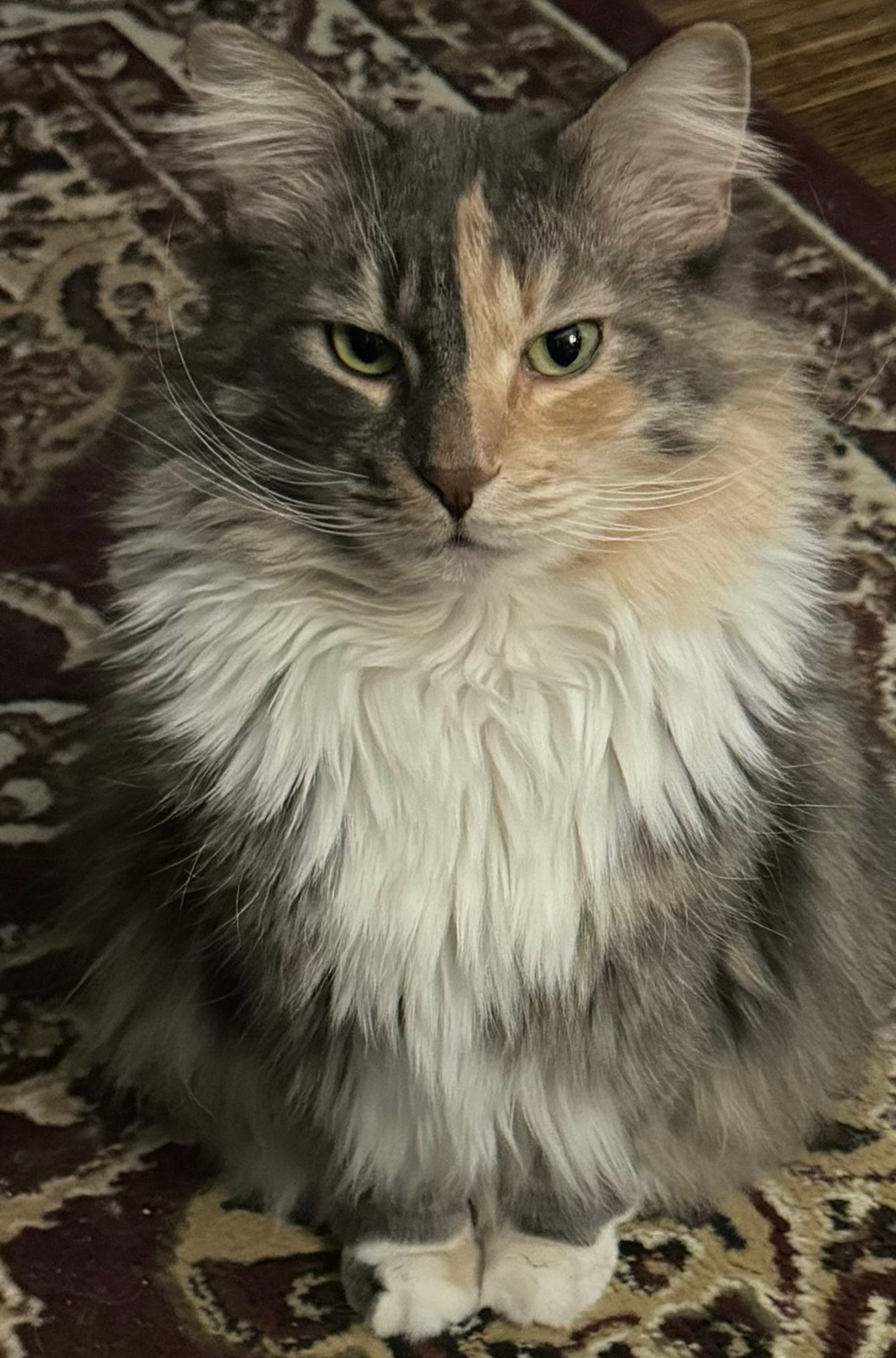The Regular Friday Post
Rando Lyrics: If you're thinking of me now I hope you know that I don't need no explanation
Last week’s rando lyrics: The lyric, “Dead kings, many things I can't define Occasions, persuasions clutter your mind ” is from the song "Incense And Peppermints”, a song by the LA area band The Strawberry Alarm Clock as Track 9 on the album “ Incense And Peppermints”, released in 1967. The album was produced by Frank Slay.
(Ed - I love watching old clips like this - everything is synced, not one instrument cable to be seen because nothing and no one is plugged in or mic’d….)
“The song is officially credited as having been written by John S. Carter and and Tim Gilbert, although it was based on an instrumental idea by band members Mark Weitz and Ed King.[5
Credit: Wikipedia Link: Incense And Peppermints
“There is a rather convoluted backstory behind the creation and crediting of this song and how the lead vocals ended up being sung by someone who was never a member of the band.
In early 1967, the band was still known as Thee Sixpence and had released four singles under that name. Keyboardist Mark Weitz had come up with most of the music for an unnamed song including the intro, the verses and the ending. He brought in guitarist Ed King, later of Lynyrd Skynyrd, to co-write the bridge and the guitar parts. The producer of the song, Frank Slay, then gave the mixed music to John S. Carter of The Rainy Daze, another band Slay produced. Carter ended up writing all of the lyrics and figuring out the music line through the song with Tim Gilbert.
According to Weitz, when it came time to print the credits for the song, Slay was planning on crediting Carter, Gilbert, King and Weitz. But the manager of the band, Bill Holmes, wanted himself and all of the other members of the band included as well. This caused a major argument between Holmes and Slay. Whether it was because there was a standard convention of the time of no more than four people credited, or some other factor, is unknown. When the printing was done, Slay only listed the two band non-members: John S. Carter and Tim Gilbert, who continue to receive 100% of the royalties to this day. Weitz considered suing at several points for his proper credit, but ultimately had to give up because of the costs involved.
As to the lead singer, apparently none of the members of the band fit the song properly. Manager Bill Holmes had brought 16 year old Greg Munford, a guitar player who he also managed, to be a guest to the studio that day. Munford was asked to give the song a try and ended up sounding the best for the part. The rest of the band were employed as background and harmony singers.
The song was initially released in April 1967 as the B side to the A side song “The Birdman Of Alkatrash” (by Weitz) under the Thee Sixpence name. It features the misspelling “Pepermints”. Local radio stations, though, were playing “Incense and Peppermints” and the song was gaining popularity. Uni Records (now Universal Music Group) picked up the record and it was released as the A side in May 1967. By this point, the band had changed their name to “The Strawberry Alarm Clock” due to the similarity of their old name with another band.
The song peaked at #1 in November, 1967 and went gold by December 1967.
Credit: Genius Link:Incense And Peppermints
Ed. - I think this song got stuck in my head (lately) because it was one of the songs in our Substack friend Brad Kyle’s “Tune Tag” feature with someone. Don’t remember. Brad does the Tune Tag thing on Tuesdays. Check out his Substack here: FR&B
Welcome to The Regular Friday post!
For Today
Today I want to do something a bit different. First, I want to explain my rationale behind the way I do the “A Song To Play” section. If it’s the “Rando Lyrics” selection for this week, I’ll have already explained a bit about the song, why I chose it, and whatever I can find about the backstory. If it’s not the “Rando Lyrics” song, I’ll provide some of that backstory. Either way, I then post a “Chordify” chart that shows the chords used in the song, along with an explanation of the “signatures”: Time, Key and Tempo. Then I’ll post the lyrics from the “Genius” website. A bit of explanation about each. Chordify is an automated (not sure if it’s AI or just an algorithm) website that analyzes songs and returns a “chart” that can be exported as a .pdf file. The PDF has the song title, “signatures” and looks like (but isn’t) the sheet music for the song. It’s really just a chord chart with a variety of notes in measures that represent the chords as the algorithm “heard” them. Are they always accurate? Pretty much, though not always as we’ll see this week, and I sometimes see sort of odd extended chords pop in that may be accurate or may be caused by some spurious note in the recording. The charts are almost always accurate enough to be able to play the song, though - even the one for this week’s song would work, but it just would not do justice to the legendary musician performing it. You’ll see what I mean…
The next thing I do is separately post the lyrics. That’s where it gets a little awkward - those are two things separately that belong together. The chord changes ought to be tied to the lyrics so that as you listen to the song - maybe on YouTube or one of the streaming services, you can hear the chord change associated with the lyric, and that’s how you learn to play and sing the song.
There are a couple of ways I could do that: One, I could go to Ultimate Guitar and poach a chord chart someone else has already done. The problem for me at least, is both Chordify and Ultimate Guitar are subscription services, and I’m subscribed to both, paying a yearly fee for access. I’m not sure if simply using one of those resources is out of compliance with the terms of service for each, and I’m not eager to test that. My use on a free Substack is potentially covered under the Fair Use doctrine for educational purposes, and since I don’t have paid subscribers, I might be okay there. Still, “fair use” usually carries with it a requirement for “brief excerpts used for educational purposes” caveat. Creating a chord chart with lyrics and chord changes tied together for an entire song is potentially a copyright violation. Since Ultimate Guitar is a subscription service, they may pay copyright royalties to artists whose work is published there, but most if not all of the artists and publishers would likely be thrilled if someone used the chord chart in a public performance or recording. Royalties for those uses are potentially much greater, actual “harm” for failing to pay royalties is much easier to prove, and a bar or lounge or music festival or something like that will simply pay, knowing it’s easier and they don’t risk expensive litigation.
For me, there is another reason -
Shameless Self Promotion Section:
My song is out! Link: “Long Road Back” (click on link for streaming options)…
I’m a recording artist, my song is out (more on the way!), if you click the link above you can choose one of several streaming services and if you listen to at least 30 seconds of it, I’ll earn something like .003 cents. Three thousandths of one cent! Validation!!!! Unless I don’t make it to a thousand streams by June, in which case the Spotify bandits will give my royalties to someone “popular”… whatever. I’d be thrilled all the way to the bank if someone turned my song into a gigantic hit and had to pay me cover royalties. Yeah, not likely, but I would be much less appreciative if said “popular artist” got an unattributed chord chart of my song with lyrics and chords and I had to pay lawyers to validate my claim. So, I don’t put other artists’ lyrics in a chord chart on here.
But I will show you how to make your own for your personal, non-commercial use at home for educational purposes so you can improve your guitar skills by playing popular songs. There’s no wink-wink, nudge-nudge there. If you cover someone’s song in a commercial setting - recorded, streamed, live, whatever - you owe the owner(s) of the Composer, Publisher and Sound Recording copyrights some $$, even if those rights are not registered with the U.S. Copyright Office - but then the claimant has a proof problem - so don’t be that person if you’re a singer/songwriter… just sayin’…registering with the US Copyright Office is much less expensive than lawyers….
A Song To Play
Mr. John Hurt - I’ve written several times about Mr. Hurt and how the tag “Mississippi” was disfavored by him. Some record label exec sort of stuck him with it, but he is said to have disliked it. For that reason, I never use it when writing about him, but it’s unavoidable in the media.
This song is a “Sunday morning” sort of song, church music essentially (as opposed to the “Saturday night” sorts of songs, which were definitely not church music, but still popular back in the day…). Mr. Hurt’s alternating bass line fingerstyle pick is perfectly on the beat, and his fretting hand moves gracefully, quickly, but never hurried. He just knows where he is on the fretboard at all times - fabulous to watch.
I chose this because I believe it to be a traditional spiritual in the public domain.
Not going to bother with the Chordify chord chart here, it doesn’t do justice to this live version by Mr. Hurt of the song. I did find what I believe to be accurate chords for this version on Ultimate Guitar (supposedly “Official” but that can be a somewhat flexible term when describing live performances). What’s clear is Mr. Hurt is not playing the simplistic 2 chord Ab and Eb sequence that the Chordify algorithm “hears”. It does appear that the UG chart for a recorded version is possibly correct in the Key of Ab, but from the video he’s pretty clearly transposed a half step down and is playing a GMaj chord, then playing a couple of “slash” chords (no, not that Slash…), G/B and G/A and using them to create that bass walkdown on the 7th fret (B in the bass), 5th fret (A in the Bass) and then to the “standard” GMaj cowboy chord (3rd fret bass). Something like this:



Note the middle chord diagram shows the bass note on the low E string fretted on the 5th fret A note and the left side diagram shows the bass note B on the 7th fret barre. That’s why they’re called slash cords and spoken as “G over B” and “G over A” - that indicates there is a note that is not part of the triad or is inverted within the triad in the bass (meaning on the low E or A string) notes.
“You Got To Walk That Lonesome Valley”
[Intro, spoken by Mr. Hurt] Well, this is a, religious song, and it's so true, s'true. I always like to play religious songs, especially when you know they're true. This is "You Got to Walk that Lonesome Valley." You got to walk it for yourself, can't nobody walk it for you, this valley, and I guess you know what valley I'm talkin' 'bout, can't nobody walk it for you, you got to walk it for yourself, that's right... [Intro -played] G G/A G/B G G/B G/A G/B [Chorus] G G You got to walk, that lonesome valley G/A G/B Well, you got to walk, it for yourself G Ain't nobody else, can walk it for you G/B G/A G/B G You got to walk, that valley for yourself [Verse 1] G G My mother had to walk, that lonesome valley G/A G/B Well, she had to walk, it for herself G There's nobody else, can walk it for you G/B G/A G/B G Yes, she had to walk, a'that valley for herself [Chorus] G G Oh yes, you got to walk, that lonesome valley G/A Well, you got to walk, it for yourself G There's nobody else, can walk it for you G/B G/A G/B You got to walk... [Verse] My father had to walk, that lonesome valley He had to walk, it for his'self There's nobody else, can walk it for him A'he had to walk...
[Verse]
Oh, Jesus had to walk that lonesome valley
He had to walk, it for His'self
There's nobody else, could walk it for Him
He had to walk, that valley for His'self
[Chorus]
Oh yes, you got to walk, that lonesome valley
Well, you got to walk, it for yourself
There's nobody else, can walk it for you
You got to walk, that valley for yourself
Ed - Note the above may look kinda goofy if you’re reading it on a phone, but this will still work: Cut and paste the above from the played intro through that last verse into a word processing document, insert blank lines between the phrases of the last verses and chorus and type in the appropriate chords as in the verse/chorus patterns above. Then print that sheet (try to fit it on one page, use columns if you have to). You may have to adjust the font size up a bit and/or boldface the whole document to make sure it’s legible at the distance to your music stand. And that’s a chord chart…
If you’re enjoying our content, please let your friends and musician acquaintances know about us!!! Thanks for supporting this free newsletter!
Some Links for today:
From Blues Guitar Unleashed: BGU is just a great site for guitarists. Mr. Hamlin’s main fare is electric guitar and especially blues/jazz, but every guitarist will learn something…
From Acoustic Guitar Magazine:
From Rumble featuring our absolute favorite video guitar skills instructor, Sean Daniel
What I’m Listening2:
LINK»> Check out the Waitin' For The Sunshine playlist on Amazon Music.
A milestone this week as we went over 150 subscribers!!! Thank you all so much!!!
Thank You To Our New Subscribers!! This Week’s Conversation With Mika, the Cat:
Me: “You aren’t getting treats until it’s the normal treat time. Stare at me all you want….”
Mika: “Fine. I will!”
Disclaimer Section
This Substack is free, I receive no compensation of any kind from companies or products I mention. Some linked or quoted material may be copyrighted by others, and I credit them. I rely on the “Fair Use” doctrine for educational purposes (Link: Fair Use). *I do not use AI, things I link to might though. -Michael Acoustic
*Exception: For the next few weeks at least I’ll be testing out a beta feature offered on Substack that produces an AI image based on a text input - the image of the week can be seen in the upper left corner of this post… (it’s not me in the pic, just sayin…)
Thanks for reading! Subscribe for free to receive new posts and support this newsletter.
Cheers and keep playing!!
Michael Acoustic
“It’s never really final - you just run out of things you can bear to change…”








Strawberry Alarm Clock. One of the bands of the psychedelic movement in America. An LA band, right? But not part of the Laurel Canyon cabal. I believe the psychedelic stuff was much more progressive in England ... Cream, The Yardbirds, The Move, Pink Floyd with Syd Barrett.
I have a great personal story to tell you about the San Diego music scene in the 60s ... involving Gary Puckett and the Union Gap and Iron Butterfly. Remind me to tell it sometime.
Also, I enjoyed the video of Mississippi John Hurt. Jeez, his picking and changes are so effortless. What a wonderful surprise for a Friday morning. A young YouTuber -- English musician Phil (Wings of Pegasus) -- does a complete analysis of Hurt's track here:
https://www.youtube.com/watch?v=TeWYFXqUam0
Thanks, Michael, for the Tune Tag shout-out! For your readers, here's a direct route to that particular Tune Tag (with Strawberry Alarm Clock and others!) with Andres! https://bradkyle.substack.com/p/tune-tag-26-with-andres-of-the-vinyl
Great snap of the mighty Mika! That straight-on pose really shows off her amazing face....I've made it my new phone wallpaper!